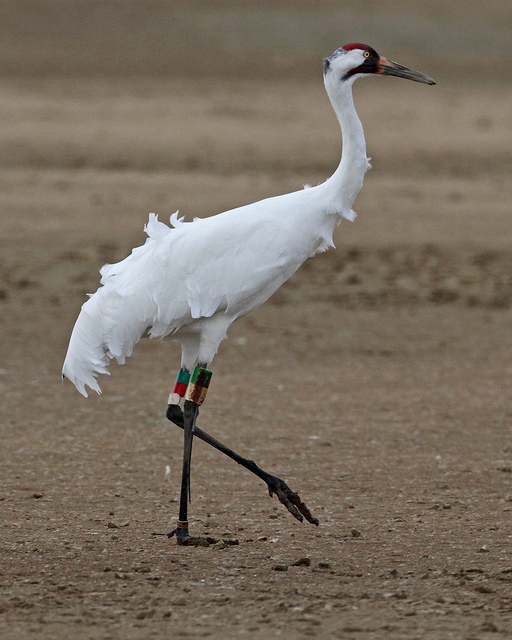
Dec 3, 2012
In this short, costumed scientists create a carefully choreographed childhood for a flock of whooping cranes to save them from extinction. It's the ultimate feel-good story, but it also raises some troubling questions about what it takes to get a species back to being wild.
 Perched in a duck blind in a wildlife research center outside of Washington, D.C., Andrea Seabrook gets a glimpse of her first whooping crane: a tall, snowy-white bird on stalky legs with a bright red-crested head. It's no surprise she had to drive to Maryland and hide in a tiny shack to see one -- less than a hundred years ago, there were just 16 whooping cranes left, and only 4 breeding females.
Perched in a duck blind in a wildlife research center outside of Washington, D.C., Andrea Seabrook gets a glimpse of her first whooping crane: a tall, snowy-white bird on stalky legs with a bright red-crested head. It's no surprise she had to drive to Maryland and hide in a tiny shack to see one -- less than a hundred years ago, there were just 16 whooping cranes left, and only 4 breeding females.
Now scientists like John B. French are taking these cranes under their wings to keep them from dying out. It's no easy task -- the scientists go to ludicrous lengths to teach these cranes how to survive in the wild, while making sure the cranes never know they're interacting with humans. Chicks nestle with taxidermied moms, are taught the basics of crane life by puppet-wielding researchers wearing white cloth suits, and are led across the country by ultralight planes (piloted, of course, by a crane-suited human).
Crazily enough, it seems to be working -- there are now somewhere around 500 whooping cranes in the wild, 30 times more than there were in the 1930s.
But that's not quite the whole story. Andrea tells us about a sad mystery in the middle of this monumental effort -- one very crucial moment where things go terribly wrong. She and John French explain the strange behavior that has crane champions worried, and what might be causing it.
*Image of whooping crane at Patokah River National Wildlife Refuge in Indiana on its migration south. Steve Gifford/USFWS/flickrCC-BY-2.0.
For more on whooping cranes, check out Operation Migration's site for tons of amazing photos and info. And take a look at their YouTube channel, where we found this video of a friendly puppet teaching a whooping crane chick how to eat and drink:
Flip through this slideshow of whooping crane photos from the US Fish and Wildlife Service Headquarters: